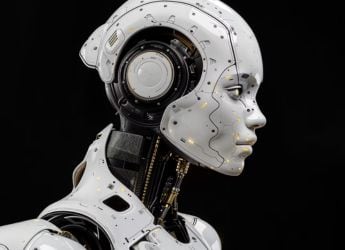- Home
- Science
- Science News
- Intel 'Loihi' Self Learning AI Chip Is Neuromorphic, Mimicking How the Brain Functions
Intel 'Loihi' Self-Learning AI Chip Is Neuromorphic, Mimicking How the Brain Functions

Intel has announced a self-learning neuromorphic chip that could raise the bar for artificial intelligence. Codenamed Loihi, Intel's self-learning AI chip is said to mimic "how the brain functions" by learning to operate based on various modes of feedback from the environment.
"This extremely energy-efficient chip, which uses the data to learn and make inferences, gets smarter over time and does not need to be trained in the traditional way. It takes a novel approach to computing via asynchronous spiking," said Intel's Doctor Michael Mayberry. Intel claims that Loihi is up to 1,000 times more energy-efficient than general purpose computing required for typical training systems.
The test AI chip by Intel will be made available to universities and research institutions with a focus on advancing AI in the first half of 2018.
The Loihi test chip's features include fully asynchronous neuromorphic many core mesh that supports a wide range of sparse, hierarchical, and recurrent neural network topologies with each neuron capable of communicating with thousands of other neurons.
"The potential benefits from self-learning chips are limitless. One example provides a person's heartbeat reading under various conditions - after jogging, following a meal or before going to bed - to a neuromorphic-based system that parses the data to determine a "normal" heartbeat. The system can then continuously monitor incoming heart data in order to flag patterns that do not match the "normal" pattern. The system could be personalized for any user," explains Mayberry.
Intel details that each neuromorphic core includes a learning engine that can be programmed to adapt network parameters during operation, supporting supervised, unsupervised, reinforcement and other learning paradigms.
Get your daily dose of tech news, reviews, and insights, in under 80 characters on Gadgets 360 Turbo. Connect with fellow tech lovers on our Forum. Follow us on X, Facebook, WhatsApp, Threads and Google News for instant updates. Catch all the action on our YouTube channel.
Related Stories
- Samsung Galaxy Unpacked 2025
- ChatGPT
- Redmi Note 14 Pro+
- iPhone 16
- Apple Vision Pro
- Oneplus 12
- OnePlus Nord CE 3 Lite 5G
- iPhone 13
- Xiaomi 14 Pro
- Oppo Find N3
- Tecno Spark Go (2023)
- Realme V30
- Best Phones Under 25000
- Samsung Galaxy S24 Series
- Cryptocurrency
- iQoo 12
- Samsung Galaxy S24 Ultra
- Giottus
- Samsung Galaxy Z Flip 5
- Apple 'Scary Fast'
- Housefull 5
- GoPro Hero 12 Black Review
- Invincible Season 2
- JioGlass
- HD Ready TV
- Laptop Under 50000
- Smartwatch Under 10000
- Latest Mobile Phones
- Compare Phones
- Huawei Nova 15
- Huawei Nova 15 Pro
- Huawei Nova 15 Ultra
- OnePlus 15R
- Realme Narzo 90x 5G
- Realme Narzo 90 5G
- Vivo S50 Pro Mini
- Vivo S50
- Asus ProArt P16
- MacBook Pro 14-inch (M5, 2025)
- Huawei MatePad 11.5 (2026)
- OnePlus Pad Go 2 (5G)
- OnePlus Watch Lite
- Just Corseca Skywatch Pro
- Acerpure Nitro Z Series 100-inch QLED TV
- Samsung 43 Inch LED Ultra HD (4K) Smart TV (UA43UE81AFULXL)
- Asus ROG Ally
- Nintendo Switch Lite
- Haier 1.6 Ton 5 Star Inverter Split AC (HSU19G-MZAID5BN-INV)
- Haier 1.6 Ton 5 Star Inverter Split AC (HSU19G-MZAIM5BN-INV)
















